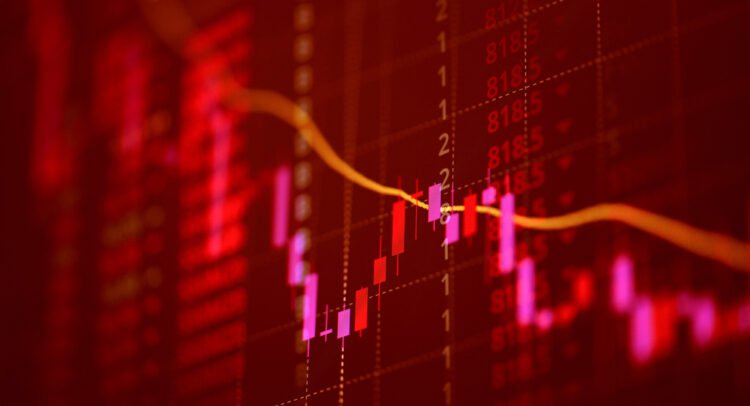Stock Market Today: Stocks Swing Dramatically as Tariff Turmoil Fuels Market Mayhem

In a chaotic trading session with dizzying reversals, U.S. stocks tumbled on Monday as President Trump's escalating trade war with China sent Wall Street into a tailspin. The S&P 500 (GSPC) dropped 1.7% around midday, the Nasdaq Composite (IXIC) slid 1.3%, and the Dow Jones Industrial Average (DJI) shed over 600 points, or 2.3%, after briefly rising into positive territory.
The volatility came amid conflicting headlines about potential tariff delays and a White House pushback against speculation that offered temporary hope to investors. Markets clawed back from steeper early losses, but fear of a deepening trade conflict weighs heavily on sentiment.
Market Movers:
- JPMorgan Chase (JPM): Shares of the banking giant fell as CEO Jamie Dimon warned that tariffs could slow growth and stoke inflation, though he doesn’t foresee a recession. Dimon’s attempt to calm nerves did little to shield JPM from broader financial sector weakness.
- BlackRock (BLK): The asset manager slid after CEO Larry Fink said markets could fall another 20% and warned that the economy is likely already in a recession. However, he also noted the downturn could present long-term buying opportunities.
- Apple (AAPL): Apple shares seesawed as the tech bellwether remains highly exposed to China. Any additional tariffs could disrupt its supply chain and hit margins, compounding investor anxiety as the Nasdaq teeters on bear market territory.
- Exxon Mobil (XOM): Oil giant Exxon tumbled alongside crude prices, which dropped nearly 3% intraday. Oil dipped below $60 a barrel for the first time since 2021, raising fresh concerns about global demand.
- Tesla (TSLA): The EV maker dipped early but recovered slightly as investors weighed the impact of tariffs on China-sourced components. Tesla’s exposure to Asian supply chains and dependence on international sales left traders jittery.
Tariff Turmoil and Global Fallout
Trump's threat of an additional 50% tariff on Chinese imports by April 9 caught markets off guard, dashing hopes of near-term negotiations. Markets initially rallied on a rumor that the administration was considering a 90-day pause, only to plunge again after a White House-linked account labeled the report “fake news.”
The back-and-forth sent indexes into a tailspin and highlighted the market’s sensitivity to every twist in tariff talk. With China and the EU readying countermeasures, fears of a protracted global trade war are mounting. Overseas markets reflected the anxiety: Japan’s Nikkei and Hong Kong’s Hang Seng both fell into bear market territory Monday.
Fed's Limited Firepower
Despite Trump’s renewed calls for the Federal Reserve to slash interest rates, economists and investors alike remain skeptical that monetary easing would solve the problem. Fed Chair Jerome Powell has taken a cautious “wait and see” approach, emphasizing that tariffs are inflationary and hinting that the central bank won’t act hastily.
Wall Street is currently pricing in multiple rate cuts by year-end, but experts warn that cutting rates amid rising prices could backfire. Julia Coronado, president of MacroPolicy Perspectives, said the Fed must “be the adult in the room” and cannot “catch the falling knife” created by volatile policy decisions.
Looking Ahead
With the Nasdaq already in bear market territory and the S&P 500 nearing the same fate, all eyes are on whether the White House walks back its aggressive trade stance—or doubles down. Investors are bracing for more volatility as additional tariffs are set to take effect on Wednesday. Unless clarity and compromise emerge soon, the market could be in for further pain.
The next few days will be crucial. If the administration signals any real willingness to de-escalate, markets may stabilize. But if not, the risk of a prolonged sell-off—and a recession—will continue to rise.




